As a construction company, you know the importance of scaffolding very well. It is a silent guardian enabling your workers to reach heights and work effectively. However, scaffolding also requires constant inspections and maintenance. Now you must be thinking, why?
Well, for that, you must read this guide to the end. Today, we will share why regular scaffolding inspections and maintenance aren’t just bureaucratic box-ticking exercises but crucial practices that keep your workforce safe.
So, if you need bespoke scaffolding for your construction site, look no further than Kent’s J.K.L Scaffolding Services. Call us on 0800 061 4800 or email info@jklscaffolding.co.uk to speak to a team member and arrange your convenient site survey today.
Consult JKL Scaffolding for peace of mind and expert scaffolding services in Kent.
Importance Of Scaffolding In Construction
Before we move ahead first, let’s show you the reasons why scaffolding is essential in construction:
Scaffolding is far more than a temporary framework; it is a crucial element in the construction industry that ensures safety and efficiency. They are a stable and secure platform for workers to perform tasks at elevated heights, mitigating the risks of working from ladders or unstable surfaces. It gives workers convenient access to different areas of a construction project, streamlining workflow and enhancing overall productivity. By ensuring that scaffolding is erected correctly and maintained, construction companies can create a safer working environment while facilitating smoother operations on the job site.
Why Are Regular Scaffolding Inspections And Maintenance Essential?
Now that you know the importance of scaffolding in construction, they require frequent inspections and maintenance. This is vital for identifying potential hazards and ensuring compliance with the UK’s legal requirements. These inspections serve multiple purposes:
1. Accident Prevention
Frequent inspections help identify potential hazards such as structural weaknesses, loose components, or improper assembly. By addressing these issues promptly, the risk of accidents and injuries is significantly reduced.
2. Compliance With Regulations
Scaffolding must adhere to Health and Safety Executive (HSE) guidelines. The Work at Height Regulations 2005 mandates that scaffolding in Kent is inspected regularly every seven days, as well as other regulatory standards. The other key points include:
- Scaffolds must be erected, altered, and dismantled only by competent persons.
- After any event likely to affect the scaffold’s stability, additional inspections are required.
- Records of inspections must be kept and made available to relevant parties.
3. Structural Integrity
Thorough inspections assess the overall stability and integrity of scaffolding structures. This is crucial, especially after adverse weather conditions or modifications, to ensure the scaffold can safely support workers and materials.
4. Identification Of Wear And Tear
Over time, scaffolding components can experience wear and tear. Regular checks help detect damaged planks, worn-out guardrails, or weakened joints. Prompt repairs or replacements maintain structural integrity and prevent further deterioration.
5. Minimising Downtime And Costs
Effective maintenance practices prolong the lifespan of scaffolding systems, reducing the need for frequent replacements. This minimises downtime and repair costs, enhancing overall project efficiency and profitability.
6. Fostering A Culture Of Safety
Regular inspections and maintenance promote a culture of safety on construction sites. By prioritising these practices, employers demonstrate their commitment to worker well-being and set a positive example for all personnel.
7. Tracking Maintenance History
Detailed records of inspections, repairs, and modifications help track the scaffolding’s condition over time. This documentation is essential for proactive decision-making, demonstrating compliance, and identifying recurring issues.
Step-By-Step Methods For Effective Scaffolding Inspections
Let’s show you how to conduct adequate scaffolding inspections, following these step-by-step methods:
- Visual check: Start with a thorough visual examination of all components.
- Stability assessment: Ensure the scaffold is level and properly supported.
- Connection inspection: Check all joints, couplers, and fixings for security.
- Platform evaluation: Assess the condition of working platforms and boards.
- Guard rail inspection: Verify that guard rails and toe boards are correctly installed.
- Access check: Ensure safe access routes to and from the scaffold.
- Load assessment: Confirm that the scaffold is not overloaded, and weight limits are observed.
- Environmental factors: Consider weather conditions and their impact on the scaffold’s safety.
Scaffold Inspection Report
After the inspection, documenting inspections is crucial for tracking outcomes and maintaining a safety record. A comprehensive scaffold inspection report should include:
- Date and time of inspection
- Inspector’s name and qualifications
- Scaffold location and unique identifier
- Type of scaffold and its intended use
- Detailed observations and findings
- Any defects or issues identified
- Recommendations for repairs or modifications
- Overall safety status of the scaffold
This documentation serves as a legal record and helps plan maintenance activities and ensure continuous improvement in safety practices.
Scaffolding Maintenance Tips
Regular maintenance is vital to prolonging the life of scaffolding and ensuring its safe use. Here are some essential maintenance tips:
- Clean regularly: Remove debris, dirt, and any corrosive substances.
- Lubricate moving parts: Keep all movable components well-lubricated.
- Replace damaged parts: Promptly replace any worn or damaged components.
- Protect from weather: Use protective coverings when scaffolding is not in use.
- Store properly: Ensure proper storage of scaffolding components when dismantled.
- Train staff: Regularly update workers on proper scaffolding use and maintenance.
JKL Scaffolding – Professional Scaffolding Services In Kent
JKL Scaffolding is your trusted partner for safe and efficient scaffolding solutions in Kent and the South East. We understand that scaffolding is more than just a temporary structure; it’s crucial to ensuring worker safety and project efficiency.
Our expert team conducts regular inspections and maintenance, adhering to HSE guidelines and the Work at Height Regulations 2005. We prioritise accident prevention, structural integrity, and compliance with UK regulations. Our comprehensive approach includes thorough visual checks, stability assessments, and detailed inspection reports. We offer essential safety tips, from regular cleaning to prompt replacement of damaged parts.
At JKL Scaffolding, we’re committed to fostering a culture of safety on construction sites. Our services minimise downtime, reduce costs, and enhance overall project efficiency. Whether you need scaffolding for domestic, commercial, or industrial projects, we provide tailored solutions to meet your requirements.
Contact JKL Scaffolding
Conclusion
In short, regular scaffolding inspections and maintenance are legal requirements and essential practices that safeguard workers, enhance project efficiency, and ensure compliance with UK regulations.
So, if you need professional scaffolding services in Kent, contact JKL Scaffolding on 0800 061 4800 or email info@jklscaffolding.co.uk. Our team of experienced professionals can provide comprehensive construction, inspections, maintenance, and advice tailored to your specific scaffolding needs.
FAQs
1. Why are regular scaffolding inspections important?
Regular inspections are crucial for identifying potential hazards, ensuring compliance with safety regulations, and preventing accidents. Plus, they are legal requirements that adhere to HSE guidelines and the Work at Height Regulations 2005.
2. How often should scaffolding be inspected?
According to HSE guidelines and the Work at Height Regulations 2005, the inspection should be conducted every seven days. We suggest it should be conducted daily before use and weekly for longer-term structures.
3. What are the common issues identified during scaffold inspections?
Common issues include structural damage, loose connections, and missing components.
4. How does regular maintenance improve scaffolding safety?
Regular maintenance ensures that scaffolding remains stable and compliant with safety standards, reducing the risk of accidents.
5. What are the signs that indicate a scaffold needs maintenance?
Signs include visible damage, instability, or any structural issues identified during inspections.



